Mainstream ‘pluralism’
from Lars Syll

The only economic analysis that mainstream economists accept is the one that takes place within the analytic-formalistic modeling strategy that makes up the core of mainstream economics. All models and theories that do not live up to the precepts of the mainstream methodological canon are pruned.  You’re free to take your models — not using (mathematical) models at all is considered totally unthinkable — and apply them to whatever you want — as long as you do it within the mainstream approach and its modeling strategy.
You’re free to take your models — not using (mathematical) models at all is considered totally unthinkable — and apply them to whatever you want — as long as you do it within the mainstream approach and its modeling strategy.
If you do not follow that particular mathematical-deductive analytical formalism you’re not even considered doing economics. ‘If it isn’t modeled, it isn’t economics.’
That isn’t pluralism.
That’s a methodological reductionist straightjacket.
Leave a comment Cancel reply
This site uses Akismet to reduce spam. Learn how your comment data is processed.
Real-World Economics Review
WEA Books
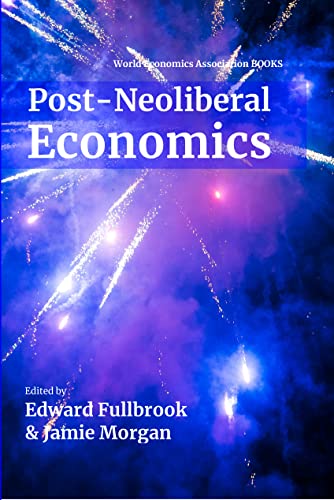
follow this blog on Twitter
Top Posts- last 48 hours
- Proper use of math in economics
- USA: The Great Prosperity / The Great Regression : 5 charts
- The non-existence of economic laws
- Commnts on issue 87
- I heard there’s some good shit on TV tonight …
- The loanable funds fallacy
- “I never learned maths, so I had to think”
- CO2 on the atmosphere and annual emissions (1750-2019)
- Money and the myth of barter
- Complexity and economic laws
"We cannot solve our problems with the same thinking we used when we created them." Albert Einstein
Regular Contributors
Real World Economics Review
The RWER is a free open-access journal, but with access to the current issue restricted to its 25,952 subscribers (07/12/16). Subscriptions are free. Over one million full-text copies of RWER papers are downloaded per year.
WEA online conference: Trade Wars after Coronavirus
Comments on recent RWER issues
————– WEA Paperbacks ————– ———– available at low prices ———– ————- on most Amazons ————-
WEA Periodicals
----- World Economics Association ----- founded 2011 – today 13,800 members
Recent Comments
- yoshinorishiozawa on Cutting-edge macroeconomics …
- energyasnumeraire on The non-existence of economic laws
- yoshinorishiozawa on The non-existence of economic laws
- Guy Dauncey on The non-existence of economic laws
- John Otto de Villiers on Cutting-edge macroeconomics …
- yoshinorishiozawa on Cutting-edge macroeconomics …
- energyasnumeraire on In search of radical alternatives
- CBASILOVECCHIO on Wealth catapulted up
- ghholtham on Basics of Monetary Economies
- ghholtham on Weekend read – Enlightenment epistemology and the climate crisis
- ghholtham on Cutting-edge macroeconomics …
- Jan Milch on The eclipse part wo
- geoffdavies1944 on The eclipse part wo
- Roger C on The eclipse part wo
- David Harold Chester on Chang’s “Edible Economics”
Comments on issue 74 - repaired
Comments on RWER issues
WEA Online Conferences
—- More WEA Paperbacks —-
———— Armando Ochangco ———-

Shimshon Bichler / Jonathan Nitzan

————— Herman Daly —————-

————— Asad Zaman —————

—————– C. T. Kurien —————

————— Robert Locke —————-

Guidelines for Comments
• This blog is renowned for its high level of comment discussion. These guidelines exist to further that reputation.
• Engage with the arguments of the post and of your fellow discussants.
• Try not to flood discussion threads with only your comments.
• Do not post slight variations of the same comment under multiple posts.
• Show your fellow discussants the same courtesy you would if you were sitting around a table with them.
Most downloaded RWER papers
- Trade and inequality: The role of economists (Dean Baker)
- The housing bubble and the financial crisis (Dean Baker)
- What Is Neoclassical Economics? (Christian Arnsperger and Yanis Varoufakis)
- New thinking on poverty (Paul Shaffer)
- Why some countries are poor and some rich: a non-Eurocentric view (Deniz Kellecioglu)
- Global finance in crisis (Jacques Sapir)
- The state of China’s economy 2009 (James Angresano)
- Debunking the theory of the firm—a chronology (Steve Keen and Russell Standish)
- Green capitalism: the god that failed (Richard Smith)
Family Links
Contact
follow this blog on Twitter
RWER Board of Editors
Nicola Acocella (Italy, University of Rome) Robert Costanza (USA, Portland State University) Wolfgang Drechsler ( Estonia, Tallinn University of Technology) Kevin Gallagher (USA, Boston University) Jo Marie Griesgraber (USA, New Rules for Global Finance Coalition) Bernard Guerrien (France, Université Paris 1 Panthéon-Sorbonne) Michael Hudson (USA, University of Missouri at Kansas City) Frederic S. Lee (USA, University of Missouri at Kansas City) Anne Mayhew (USA, University of Tennessee) Gustavo Marqués (Argentina, Universidad de Buenos Aires) Julie A. Nelson (USA, University of Massachusetts, Boston) Paul Ormerod (UK, Volterra Consulting) Richard Parker (USA, Harvard University) Ann Pettifor (UK, Policy Research in Macroeconomics) Alicia Puyana (Mexico, Latin American School of Social Sciences) Jacques Sapir (France, École des hautes études en sciences socials) Peter Söderbaum (Sweden, School of Sustainable Development of Society and Technology) Peter Radford (USA, The Radford Free Press) David Ruccio (USA, Notre Dame University) Immanuel Wallerstein (USA, Yale University)


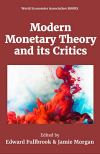

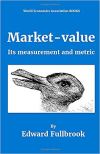


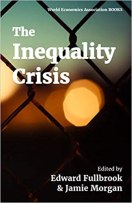














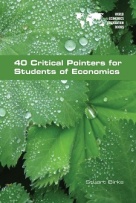


Samuelson in his book on Foundations of Economic Theory insists that Walrasian microfoundation must be the foundation of all macro theory! But in Walrasian theory it is assumed that all decision makers KNOW all market prices today and for every day in the future! In other words there can never be any uncertainty in mainstream economics!!
When we create plans and the models they’re based on, we assume all this. That we know the values of all the variables now, 2 years out, 5 years out, 10 years out, etc. But then we do something economists usually don’t do. We systematically vary these values to look for changes in the models and the plans. This is called scenario testing. Then we ask all the stakeholders to provide their own values for further scenarios. We end up with a complex plan but one which can be discussed with stakeholders and used for policy development. I see no similar process among economists.
Here’s a link to the 38-page Oxfam “Rigged Reform”https://www.oxfam.de/system/files/rigged_reform.pdf
In a way that is true i think, but my impression since the 60’s and especially after SMD theorem and then chaos and game theory, alot of the big results in mainstream economics of this form were ‘impossibility ‘ or no go theorems. Its similar to physics as i gather it—they could solve a whole lot of concrete problems (eg make superconductors…) but the big theory results were they couldn’t solve the conceptual and foundational issues (eg you ended up with ‘np-complete’ problems–no computer could even solve them.)Some said maybe we should just forget abhout those problems. (in math these are the constructionists, intuitionists, strict and ultrafinitis).
my father used samuelson—i read some of his copy (he also had lange and lerner/hayek; marx, shumpeter, and some other old stuff alfred marshall he picked up in used libraries). i dont remember samuleson saying that tho he may have.
but that book i think was writtern in 1950’s tho it went through many edtions. walras (and leontief) i think are good starting points as is bentham, and 1800;’s types. bliss=pleasure-pain = benefit-cost=utility.
in quantum theory most books teach bohr model of atom (a mini solar system—-nowadays almost a joke—its like say in biology the original cell and theories would be miniature human beings the size of a cell or molecule.
I actually think that may be true if you look closely through a microscope or electron mciroscope—maybe plot image in different coordinates (norbert weiner–‘i can fit your data to an elephant’).
alot of people see entropy as uncertainty. but in statistical mechan ics it is known basically that the (Gibbs/boltzmann) entropy of a system never changes– its a constant (unless one considers an open universe where matter is always created and destroyed, or similar things). There’s no uncertainty. The system knows where it is. What changes is the ‘coarse grained entropy’ which is what we see.
I agree that walrasian theory does say that there is no uncertainty (i first saw this inGeoregscu’s ‘entropy law’ which was also kicking around the house. ) But people aren’t bound by that, any more than by gibbs entropy—or rather one is bound by that, but that is not what you are interested in. You need to ‘coarse grain’ the system—this is what is done in my view when you discuss dynamics of general equilibriujm (tattonment or approach to equilibrium). The classic assumption is system relaxes ‘immediately’–auctioneer and everyone choose correct price immediately.
I went and bought a lock for my bike today—it took me half an hour to decide; got sort of confused. Pay 6.99 for that or 6.29 for a different kind, or maybe buy some writing paper. Standard eco cant handle that, nor can standard statistical mechanics (FPU first trie dto prove ergodic theorem and arrow of time around 1945 with ENIAC computer . They decuide it must be false, sot KAM theory was invented (ie there is no equilbirium in classic sense, instead there is an atractor or many. But later on peoplein 90’s or so people repeated FPU and said maybe it did prove ergodicity–they just didnt have a big enough computer.
Sort of like zeno;’s paradox—an arrow can never hit a target. but with a bigger computer if you long enough it will.
i’m undecided on FPU, and see it as same situation as SMD. (it would be interesting if one can find a map between those letters lime say DT=DT ‘donald trump = delerium tremens’).